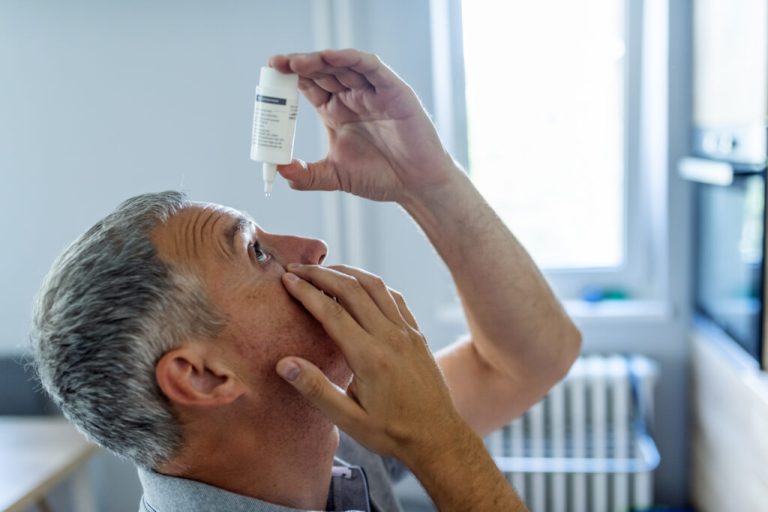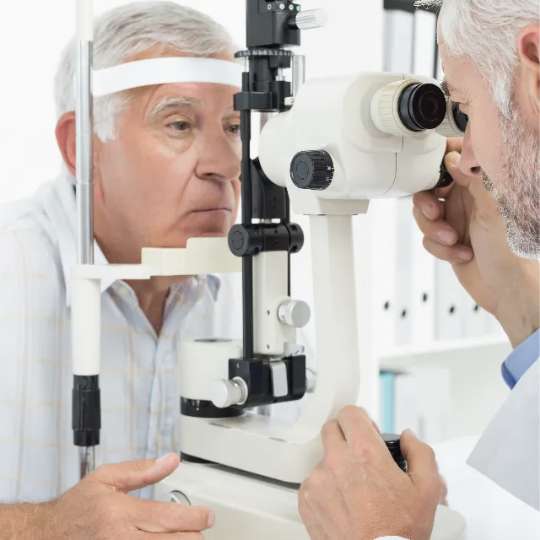Glaucoma
There are an estimated 700,000 people living with glaucoma in the UK and between 2015 and 2035, the number of people living with glaucoma in the UK is expected to increase by 44%*. Glaucoma is a group of eye diseases that gradually damage the optic nerve, which is crucial for good vision. This damage is often related to abnormally high pressure inside the eye.
Glaucoma can lead to loss of vision if early diagnosis and treatment does not occur. In most cases it tends to develop slowly over many years and affects the edges of your vision (peripheral vision) first. It’s typical to experience no symptoms in the early stages and the only way to know if you have it is to have an eye test with your local optometrist.
It is important that you attend your regular eye tests and hospital appointments to make sure the condition is monitored and managed. With early detection and treatment, most people retain good vision for life.

Types of Glaucoma
- Primary Open-Angle Glaucoma: The most-common form, where the eye’s drainage canals become clogged over time, leading to increased eye pressure.
- Angle-Closure Glaucoma: A less-common form that can occur suddenly or gradually, where the eye’s drainage canals are blocked or covered.
- Normal-Tension Glaucoma: Optic nerve damage occurs even though eye pressure is within the normal range.
- Congenital Glaucoma: A rare form of glaucoma that is present at birth, caused by incorrect or incomplete development of the eye’s drainage canals.

Getting a referral
Following an eye test at your local optician, if your optometrist thinks you may be at risk of glaucoma, you can choose to be referred to SpaMedica for further testing, monitoring and treatment if required. This doesn’t mean you have the condition. Our specialist team will conduct more tests to determine your diagnosis and the necessary course of treatment, if any.
Glaucoma Services at SpaMedica
Diagnostic clinic
After receiving your referral, we will schedule an initial appointment at one of our eye hospitals where we will carry out a series of eye tests to confirm your diagnosis. These tests include a visual field test and an eye pressure test and if glaucoma is found, the results will tell our clinicians how far the condition has developed and indicate the best course of treatment.
Monitoring clinic
Once your condition is stabilised, our monitoring service offers regular assessments of your condition to detect any progression and ultimately ensure the treatment is working as intended. This service includes detailed imaging and visual field tests to evaluate your eye pressure and optic nerve health. All the tests will be carefully reviewed by a SpaMedica glaucoma consultant and you will receive consistent monitoring once or twice a year alongside a personalised treatment plan to help prevent vision loss.
Treatment
The first line of treatment for glaucoma is SLT laser treatment. This can be carried out at SpaMedica to lower the pressure in your eye for Primary Open-Angle Glaucoma. The laser is targeted at the drainage channel in the eye, opening it up so that fluid can drain out of the eye more easily. This lowers intra-ocular pressure which reduces the risk of damage to the optic nerve.
Eye drops are also a common treatment for glaucoma. There are several different types that we can prescribe but all they all work by reducing the pressure in your eye. You may need to try several types before you find the one that works best for you. Sometimes you may need to use more than one type at a time.
Our glaucoma service is currently offered at the following SpaMedica hospitals:
References:
* Data from About glaucoma: information, signs & diagnosis | Glaucoma UK

